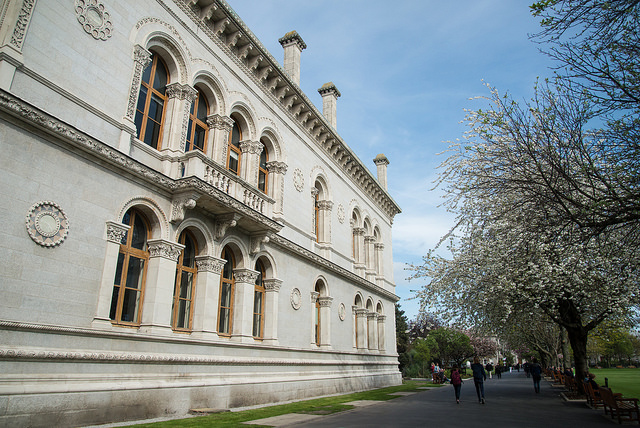A team led by Trinity geochemists has found that meteorite activity has helped to shape volcanic activity on Earth and has also influenced the earth’s surface and climate.
The team discovered that such meteorite activity can trigger “long-lived, intense and explosive volcanic eruptions” on Earth, and that by bringing up materials from the Earth’s depths, this activity changes and shapes the earth’s climate.
Such large impacts were common during the Earth’s early formation and are likely to have been much more influential than previously thought, according to this study.
During the period of the early Earth, there was a relatively brief period in which around 150 large impacts occurred on Earth, with only a handful having hit Earth since then.
In carrying out their research, the team studied rocks from one of the largest preserved impact structures on the planet, located in Sudbury in Ontario, Canada. This “bolide” hit the Earth some 1.85 billion years ago and excavated a deep basin which was filled with melted target rocks and jumbled mixed rocks replete with tiny volcanic fragments.
Researchers noted that these rocks had a distinctive, angular shape which they describe as “crab-claw”. Such forms occur when gas expands in molten rock and then explodes catastrophically- a feature of volcanic eruptions which can be seen in the glaciers in Iceland.
The key finding of this report, as published recently in the Journal of Geophysical Research, is that the composition of these volcanic fragments changed over time. Right after impact, volcanism is linked to the melting of the Earth’s crust. However, this study reveals that over time, volcanism appears to have been fed by magma coming from deeper within the Earth’s surface.
Trinity Professor of Geology and Mineralogy, Balz Kamber, said in a press statement: “This study is an important finding because it means that the magma sourcing the volcanoes was changing with time. The reason for the excitement is that the effect of large impacts on the Early Earth could be more serious than previously considered.”
Reflecting on the findings, Kamber added: “The intense bombardment of the Early Earth had destructive effects on the planet’s surface but it may also have brought up material from the planet’s interior, which shaped the overall structure of the planet.”
The findings will also encourage research on the effects of volcanism on bodies such as the Moon, Mars, Mercury and Venus, areas unaffected by the impact of plate tectonics and erosion.







